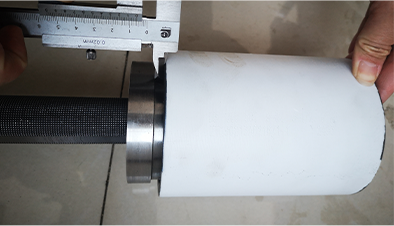- Afrikaans
- Albanian
- Amharic
- Arabic
- Armenian
- Azerbaijani
- Basque
- Belarusian
- Bengali
- Bosnian
- Bulgarian
- Catalan
- Cebuano
- Corsican
- Croatian
- Czech
- Danish
- Dutch
- English
- Esperanto
- Estonian
- Finnish
- French
- Frisian
- Galician
- Georgian
- German
- Greek
- Gujarati
- Haitian Creole
- hausa
- hawaiian
- Hebrew
- Hindi
- Miao
- Hungarian
- Icelandic
- igbo
- Indonesian
- irish
- Italian
- Japanese
- Javanese
- Kannada
- kazakh
- Khmer
- Rwandese
- Korean
- Kurdish
- Kyrgyz
- Lao
- Latin
- Latvian
- Lithuanian
- Luxembourgish
- Macedonian
- Malgashi
- Malay
- Malayalam
- Maltese
- Maori
- Marathi
- Mongolian
- Myanmar
- Nepali
- Norwegian
- Norwegian
- Occitan
- Pashto
- Persian
- Polish
- Portuguese
- Punjabi
- Romanian
- Russian
- Samoan
- Scottish Gaelic
- Serbian
- Sesotho
- Shona
- Sindhi
- Sinhala
- Slovak
- Slovenian
- Somali
- Spanish
- Sundanese
- Swahili
- Swedish
- Tagalog
- Tajik
- Tamil
- Tatar
- Telugu
- Thai
- Turkish
- Turkmen
- Ukrainian
- Urdu
- Uighur
- Uzbek
- Vietnamese
- Welsh
- Bantu
- Yiddish
- Yoruba
- Zulu
tubing and casing
Understanding Tubing and Casing in Oil and Gas Production
In the oil and gas industry, tubing and casing are essential components that play critical roles in the extraction and management of hydrocarbons. These pipes are integral to the functionality of a well, ensuring its structural integrity, safety, and efficiency. Understanding the differences, purposes, and types of tubing and casing is crucial for professionals in the sector.
What is Casing?
Casing is a series of pipes that are installed in the borehole of an oil or gas well after drilling. It serves multiple purposes first and foremost, it stabilizes the wellbore, preventing it from collapsing during drilling operations. Additionally, casing isolates different layers of the Earth's subsurface, which can be critical when managing fluids, maintaining pressure, and preventing contamination of aquifers.
Casings are typically made from steel, specifically designed to withstand the harsh conditions encountered deep within the earth. These pipes can be classified based on their position in the well. The surface casing is the first and largest segment, installed near the surface to protect groundwater. Intermediate casing follows, which extends through various geological formations, and production casing, which is placed entirely within the production zone.
What is Tubing?
Tubing, on the other hand, is a smaller diameter pipe that is installed inside the casing. It serves as the pathway for oil and gas to flow from the reservoir to the surface. Tubing is crucial for production operations because it facilitates the extraction of hydrocarbons efficiently and safely. Unlike casing, which is fixed in place, tubing can be replaced or removed if necessary, allowing for maintenance and repair.
The materials used for tubing are also typically steel, but the specifications often differ based on the intended application. For example, different grades of steel may be selected based on the temperature and pressure conditions of the well, as well as the chemical composition of the fluids being handled. Moreover, tubing is designed to handle significant stress due to the internal pressure from the hydrocarbons and external pressures from the geological formations surrounding it.
tubing and casing

The Relationship Between Tubing and Casing
The relationship between tubing and casing is integral to the overall well design and functionality. Casing provides the structural support, ensuring that the well remains open and operational. Tubing, meanwhile, is the conduit for production. Proper installation and maintenance of both components are critical for the successful operation of a well and the long-term sustainability of oil and gas projects.
Challenges and Considerations
The oil and gas industry faces numerous challenges when dealing with tubing and casing. Corrosion is a leading issue, often exacerbated by the presence of aggressive fluids encountered in reservoirs. Choosing appropriate materials and applying protective coatings can mitigate corrosion risks. Additionally, issues such as casing failure due to mechanical stresses or inadequate sealing can lead to significant production losses and hazardous conditions.
Proper engineering, compliance with industry standards, and ongoing monitoring are essential to ensure that tubing and casing systems function optimally. Technological advances, such as real-time monitoring systems, have the potential to enhance the safety and efficiency of well operations.
Conclusion
In summary, tubing and casing are fundamental components of the oil and gas industry. They serve distinct yet interconnected purposes critical for drilling, production, and the overall management of wells. Understanding their roles, materials, and the challenges associated with them is vital for industry professionals aiming to navigate the complexities of hydrocarbon extraction efficiently and safely. Through innovation and adherence to best practices, the integrity and productivity of oil and gas wells can be maintained, paving the way for sustainable resource management in the future.
-
Tubing Pup Joints: Essential Components for Oil and Gas OperationsNewsJul.10,2025
-
Pup Joints: Essential Components for Reliable Drilling OperationsNewsJul.10,2025
-
Pipe Couplings: Connecting Your World EfficientlyNewsJul.10,2025
-
Mastering Oilfield Operations with Quality Tubing and CasingNewsJul.10,2025
-
High-Quality Casing Couplings for Every NeedNewsJul.10,2025
-
Boost Your Drilling Efficiency with Premium Crossover Tools & Seating NipplesNewsJul.10,2025







